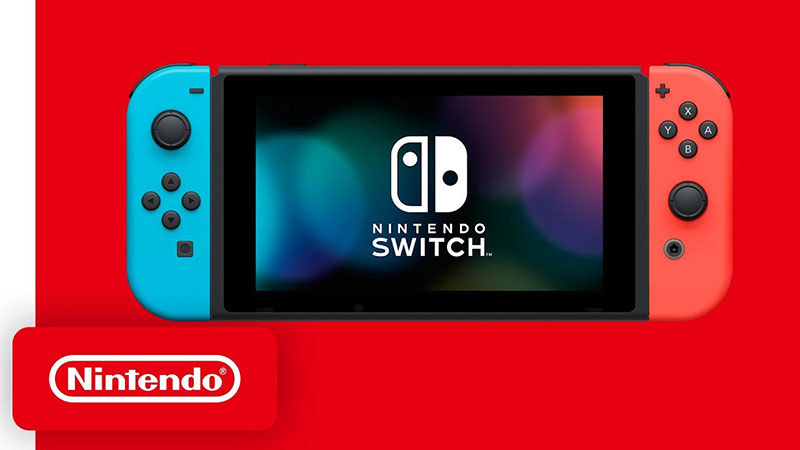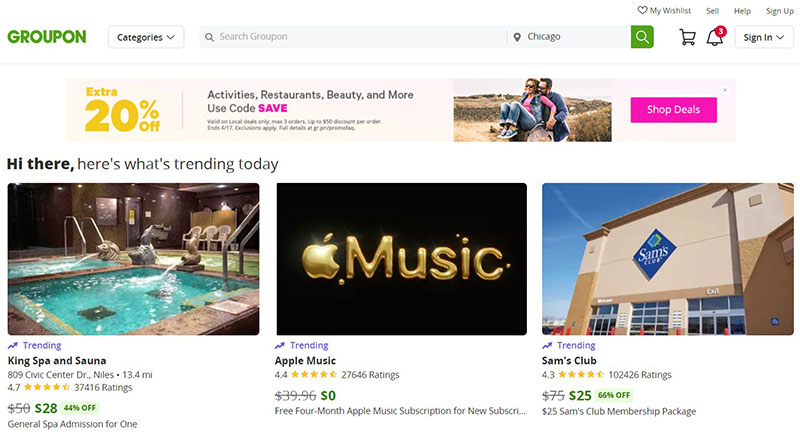Ever found yourself at a crossroads, where the only way forward is to take a sharp turn? That’s the thrill and challenge of a business pivot. It’s like your compass suddenly points in a new direction, beckoning towards uncharted territories of success.
In the bustling digital marketplace, adaptability isn’t just a buzzword; it’s survival. This piece is your map to transformation, showcasing real-life tales of strategic shifts and market adaptations that redefine goals and value propositions.
You’re in for a deep dive into pivoting strategies. By the end, expect to uncover the “Aha!” moments that reshaped start-ups and stirred innovation in seasoned enterprises.
We’ll dissect business model innovations, fearless entrepreneurial pivots, and that occasional operational change that launches companies into new orbits.
Stick around; you’ll gather an arsenal of insights on navigating business evolution, risk management, and finding that elusive product-market fit—all through the lens of those who’ve turned tides and ridden waves to new heights.
Business pivot examples
| Company | Original Business | Pivot |
|---|---|---|
| Netflix | DVD rental service | Streaming services and content production |
| Status-updating microblogging | Social networking and news | |
| PayPal | Palm Pilot payments and cryptography | Online global payment system |
| Play-Doh | Wallpaper cleaner | Children’s modelling compound |
| Nintendo | Playing card company | Video game development and hardware |
| Groupon | Social fundraising platform called ThePoint | Group discount deals marketplace |
| Western Union | Telegraphy service | Financial services and money transfer |
| Android | Operating system for cameras | Operating system for smartphones and other devices |
| Check-in app Burbn | Photo sharing and social networking service | |
| Starbucks | Selling coffee beans and equipment | Coffeehouse chain offering brewed coffee and other drinks |
| Honda | Manufacturer of piston rings/motorcycles | Automobiles and other power equipment |
| IBM | Hardware and punching card machines | IT and consulting services |
Netflix

Netflix is a great example of an online business pivot. Today viewers associated Netflix with binge-watching consecutive seasons of the original Netflix series. The mainstream app Netflix has become a staple in most homes these days.
Viewers easily forget that a few years back Netflix was the service that delivered DVDs to your mailbox. Netflix saw the writing on the wall for DVD viewing. Gradually the platform added a streaming service. Today many consumers no longer own a DVD player but are accustomed to streaming video on their phones, computers, and other devices.
While implementing this change the old DVD by mail service provided stability to the company. Gradually this service became a much smaller portion of the company’s service. Netflix saw a changing market and adapted.
What is more, Netflix saw the need for ever-changing and a wide variety of content. So they pivoted to add a production company and provide a large portion of the content available. Netflix is an outstanding example of Pivoting to take advantage of emerging markets and tech-driven consumer demand.

Originally dubbed “Odeo”, the startup platform was designed to provide accessibility to podcasts. Today it is used as a microblogging platform. It is a favorite for idea dissemination, news, and entertainment. Twitter is widely known and used today. It has become a part of political and social history.
The original version was quickly adapted when Apple launched iTunes. Twitter morphed into a platform to allow people to say what they were doing in real-time. Twitter as we know it launched in 2006 and has become an indelible part of the political and social landscape.
PayPal

PayPal of course started as a method of processing payments. It gained wide recognition as the preferred method of processing payments for eBay. PayPal developed as a brand and product that could stand independent of eBay.
This was a vital change. eBay has gradually drifted out of mainstream use but PayPal has continued in strength.
It was originally dubbed “Confinity” and designed to “beam” payments. It expanded the use of PDAs like the Palm Pilot. PayPal managed to adapt to the world of smartphones and online banking. It is still a preferred method for money transfers worldwide.
PayPal has performed other pivots and expanded into the world of banking alternatives. PayPal has continued to dominate an increasingly competitive industry of personal money transfer services.
Play-Doh

Today a company called Play-Doh is well known and a part of many childhood memories. Many people fondly remember the aroma of opening a new can of Play-Doh.
Few people realize that this beloved item was originally launched in the 1930s as a wall cleaner. The cleaning product was dubbed “Kutol”. Designed to clean coal heating soot from walls, Kutol experienced a decline in sales as gas heating grew in popularity.
The company actively searched for a new revenue stream. They found a teacher had been using the product for arts and crafts classes. This is a nice example of how listening to customers resulted in a new product idea. The release of the old product under the new brand Play-Doh in multiple colors. Play-Doh is now owned by Hasbro and is distributed worldwide.
This bit of history is a great example of thinking outside the box. New product development is costly and time-consuming. Re-envisioning existing products and services could be a successful way to Pivot your business.
Nintendo

Nintendo has reinvented itself many times over the years. Earlier in the 20th century, Nintendo was dabbling in a variety of industries including hotels, ramen noodles, and vacuum cleaners. During the 1980s it ventured into the gaming business that it is famous for today.
However, entering the game industry was not the last pivot Nintendo made. The company has continued to adapt and capitalize on new technologies.
In the 1980s the outstanding success of Donkey Kong and Mario Brothers launched Nintendo past competitors like Atari. Nintendo has continued to pivot according to market and technology changes most recently with the Switch.
Groupon

This startup launched in 2008 introducing the new concept of daily deals. Groupon experienced explosive growth. Most consumers don’t realize Groupon actually got started in 2008 as a consumer activism site known as The Point in 2007.
The Point started the tipping point concept that required enough people to sign up to meet the tipping point. Eventually, that concept morphed into the daily coupon deals that are the Groupon we know today.
Western Union

Western Union was one of the world’s largest telegram service companies. It sold over 200 million telegrams in 1929.
Telegrams quickly lost their market share as the telephone became a standard feature in American homes.
Western Union was able to pivot and secure a new niche as a money wire service. Today Western Union continues to play a key role in the money transfer industry.
Android

Android launched as a cloud-based platform to store photos. It also aimed to interface smart cameras to PCs.
Within a couple of years, they were acquired by Google. Android made a well-timed strategic pivot. They saw market potential and launched into the mobile phone and device market.

Instagram started out as the online company Burbn that allowed users to check in at their favorite spots. It also allowed them to share photos.
This endeavor started as a part-time project for Co-Founder Kevin Systrom to learn to code.
As it became clear that the most common feature was sharing photos, Systrom saw greater potential. He streamlined the app and dubbed it Instagram. 2 years later Facebook purchased Instagram for $1 billion.
Starbucks

Starbucks was founded in 1971 and started out selling espresso makers and coffee beans. By 1982 Schultz had traveled to Italy and returned with a completely new vision in mind. Starbucks pivoted from a coffee roaster to mimic the Italian espresso bar cafes.
Over the years Starbucks has continued to strategically pivot.
It still roasts and sells coffee beans from around the world at its locations and retail partners. Starbucks pivoted to expand the coffee shop on every block.
Further adapting to changing and expanding markets, Starbucks left the European cafe concept behind and moved on. Starbuck found new success in adding drive-through locations as well.
Honda

Honda is known as one of the most successful motorcycle companies. It launched in the US in the 1950s with the intention of competing with Harley Davidson. Americans weren’t particularly drawn to the look of the small Japanese bike. It also wasn’t very comfortable for those long Route 66 rides.
Eventually, Honda was able to pivot to a profitable US market. Honda executives discovered that a few US customers were using the bikes for an unconventional purpose: off-road motorcycling. Honda found a way to pivot to a unique market by selling its bikes through Sporting Goods retailers. In effect, HOnda created a previously non-existent market.
IBM

IBM was known as a personal computing giant. The PC changed all of that in the eighties and nineties. IBM no longer had the stronghold in the market.
IBM chose to make one of the boldest changes ever seen. They halted their core business, changing tactics towards providing IT consulting services. IBM managed to adapt and maximize its best customer relationships. They are now known not as a computer company, but for providing IT consulting services for large organizations.
FAQs on businesses pivoting
What does business pivot mean?
A business pivot is a fundamental shift in a company’s approach or strategy, usually prompted by market demand, new opportunities, or a need for improved revenue models. It’s about adapting and repositioning your core offerings to better align with current or emerging business landscapes.
Can you give an example of a successful business pivot?
Absolutely, think about Netflix. They were all about those DVD rentals, but they saw the future was streaming. Fast-forward to now, they’re the big dogs in online entertainment. That’s a classic case of shifting from a traditional model to a digital transformation and dominating the space.
What triggers a company to pivot?
It’s like a wake-up call, sometimes rude. Could be dwindling sales, fierce competition, or a change in market trends. Sometimes, it’s just the realization that there’s a better opportunity out there, something more in line with what the people want or tech advancements.
How do I know if my business needs to pivot?
Listen, it’s all about being honest with the numbers and customer feedback. If you’re hitting walls trying to grow, or the market’s just not vibing with what you’re offering, it might be time to brainstorm new angles. Keep your ear to the ground for changing market trends.
What are the risks of pivoting a business?
Risks? Yeah, they’re part of the deal. You might alienate your current customers, burn through cash switching gears, or even face new competitors without a solid market adaptation plan. But remember, the biggest risk can be not pivoting when the writing’s on the wall.
How does a business pivot affect employees?
Oh, it’s a rollercoaster for sure. There’ll be new roles, maybe some goodbyes, training sessions—kinda like reshuffling a deck of cards. The key? Clear communication and keeping teams in the loop. That change management skill is gold.
What is the role of leadership during a business pivot?
Leadership’s the captain of this pivot ship. They’ve got to keep the vision clear, communicate like pros, and make sure everyone’s rowing in the same direction. It’s about making tough calls with grace and steering through the storm of change.
How can a startup pivot effectively?
Startups? They’ve gotta be quick on their feet. Validate new ideas with a lean startup methodology, keep that Minimum Viable Product (MVP) handy, and gather as much user intel as they can. Agility is the name of the game here.
Are there specific industries where business pivots are more common?
Tech’s the hotbed for pivots. It moves at the speed of light, right? So, those tech companies often have to tweak or overhaul to keep up. But honestly, any industry that’s facing disruption sees its fair share of shifts.
How can I measure the success of a business pivot?
It’s in the aftermath. After the dust settles, you’re looking for improved sales, better customer feedback, and maybe even awards or media recognition as signs you’ve done well. Metrics vary, but keep an eye on that bottom line and market adaptation to know you’ve nailed it.
Conclusion
We’ve spun the wheel through the real-life business pivot examples that shook things up and charted new courses. This isn’t just about change for the sake of change; it’s strategic, it’s gutsy, and above all, it’s necessary to stay afloat in an ocean of innovation.
- Tips locked down? Check.
- Secrets of pivoting revealed? You bet.
Wrapping this up, remember it’s all about staying agile. It’s not just a one-and-done leap. It’s an ongoing dance between where you are and where the market’s heading, while keeping an eye on that growth hacking target. And you? You’re ready now, loaded with insights to steer through a pivot that doesn’t just tweak your trajectory but catapults your enterprise into the competitive landscape with gusto.
Let those stories of transformation fuel your journey – because one thing’s crystal clear: the pivot’s not just a move; it’s a mindset. So here’s to the brave ones who turn tides – may your compass always point towards true north.
If you enjoyed reading this article on business pivot examples, you should check out this one about IT outsourcing failures.
We also wrote about a few related subjects like financial projections for startups, startup consultants, startup advice, startup press kit examples, nearshoring, Berlin startups, types of investors, share options, London startups, gifting shares, best startup books and risk management process.
- 35 Successful Startups You Could Learn From - January 18, 2024
- The Biggest IT Outsourcing Failures: 7 Examples - January 14, 2024
- Famous Business Pivot Examples That You Should Know Of - January 13, 2024








